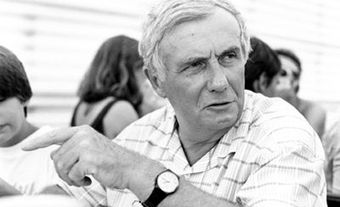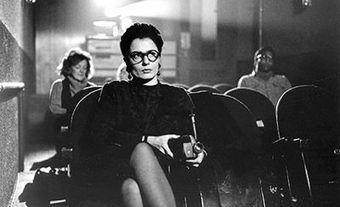
Forcier, Marc-André
Marc-André Forcier, director (b at Montréal 19 July 1947). After completing a short film in 1967, his first feature FILM, a small-scale production called Le Retour de l'Immaculée Conception (1971), revealed his original approach to cinema. He used it to fine-tune his style and spotlight the personality types he sought to explore, creating a world composed of eccentric characters who apparently reject the values of the society in which they live, particularly the world of adults, but who are nonetheless deeply rooted in that society.
Forcier's work can be divided into two periods. The first included Bar salon (1973), the film that established his reputation; L'Eau chaude, l'eau frette (1976) and the extraordinary Au clair de la lune (1982). This period was characterized by a blend of realism and fantasy that was unique in filmmaking in Québec and featured memorable characters notable for their irony and tenderness. Kalamazoo (1988), a bizarre love story featuring an androgynous siren and a dime-novel writer, launched the second period and also synthesized Forcier's earlier works; it presents a universe in which the mundane is transfigured by imagination, poetry and myth. It won the Québec Association of Cinema Critics prize for best feature film that year.
Having achieved the full exercise of his talents, Forcier began to reach a wider public. His success was consolidated with Une histoire inventée (1990), which shakes up a comic cocktail comprising Shakespearean drama, the spectacle of cabaret, a confused author and impossible love. Le Vent du Wyoming (1994) takes us into the same universe with the same mastery and use of allegory and surrealism. In 1997 Forcier brought out La Comtesse de Bâton rouge, his first film with an autobiographical appeal in which he metaphorically plunges into the heart of his own imagination in order to refer to his work as a filmmaker. Feeling less driven for a time, Forcier passed through a dry artistic period before his desire to create and renew ties with his early days as a filmmaker resulted in Acapulco Gold (2004), a mockumentary in which a French traveller meets Elvis Presley in the Mexican resort. For a lot of moviegoers the humour of this wildcap pseudomystification fell flat, but the filmmaker roared back with a vengeance with Les États-Unis d'Albert (2005), a fanciful road movie of sorts driven by wild imaginings and strange visuals. In it, wacky characters live out almost surrealistic passions and dreams, paying direct tribute to the worlds created in Forcier's earlier works. His creations rank among the most original and surprising in Québec cinema.

 Share on Facebook
Share on Facebook Share on X
Share on X Share by Email
Share by Email Share on Google Classroom
Share on Google Classroom


